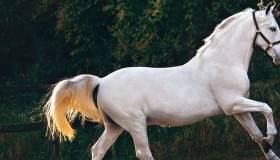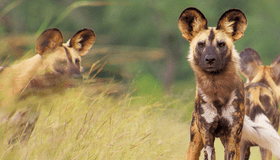July 31, 2015 – Scops owls are some of the smallest owls in Europe, with a wide habitat ranging from Spain to Russia, and from country to city. But, beginning in 1997, an alarming disease began affecting fledgling scops owls in Madrid, Spain. Young owls were arriving at the Brinzal Owl Rescue Center with unusual white sores in their mouths. The mouth sores made it difficult for the young owls to eat. Many of them would have perished without intervention from the rescue group.
Dr. Francisca L.S. Pereira, with the Brinzal Owl Rescue Center, and his team discovered that the cause of the lesions was an unusual parasite called Gongylonema, but they were unsure how the birds were getting infected. They suspected the parasite was present in the insects the fledglings were eating – but which ones?
The research team, funded by Morris Animal Foundation, devised a clever way to determine what types of insects were being brought back to the nest. Small transmitters were used to track breeding pairs’ movement. When the female’s location stayed stationary and the male began frequent hunts, it let the researchers know there were eggs and/or chicks in the nest. Small cameras also were placed near the nest’s entrance.
These strategies helped monitor the types of prey caught by the male, brought back to the nest, and fed to the mother and chicks. Using the male owl’s transmitter information, the scientists were able to locate and map the male’s hunting grounds. Pictures taken at the nest entrance helped identify the types of insects that comprise the young chicks’ diets.
Together, this information is helping researchers pinpoint and collect specific prey species that may be infected by Gongylonema. By knowing precisely which prey species are the source of infection, researchers can begin to develop and introduce control measures to save scops owlets in Madrid.
If you'd like to learn more about this study as well as other research projects being funded by Morris Animal Foundation, visit Find a Study.




